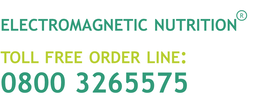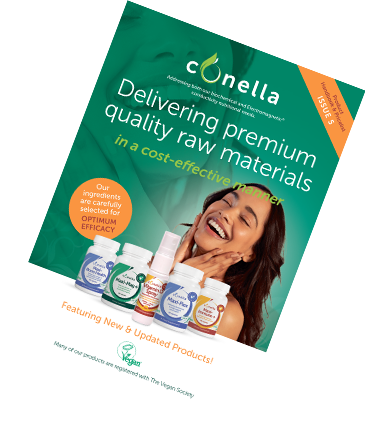.jpg)
Antioxidants are an important group of substances that can be obtained from natural food sources or food supplements. They are substances which can slow down or prevent the damage to our cells caused by free radical activity, connected to the visible signs of aging and many other associated dis-eases (inflammation). The better-known antioxidant nutrients are vitamin C, vitamin E, Coenzyme Q10, beta carotene, selenium, manganese and other plant extracts like the well documented properties of grapeseed extract and turmeric.
Free radicals are highly unstable molecules which the body produces in response to certain physical activities or the environment we are exposed to. The cell damage caused by free radicals is known as oxidative stress. This can occur from excessive exercise, mitochondrial activity, trauma and/or exposure to toxins. Oxidative stress may hugely increase our risk of developing chronic diseases, such as cancer, heart disease, Parkinson’s, Alzheimer’s, arthritis, respiratory diseases, premature ageing and vision loss, due to age related macular degeneration.
The history of antioxidants
Dating back to medieval times, scurvy was a condition particularly common amongst sailors who did not have access to fresh foods. Symptoms would include bleeding and swollen gums, loose teeth, haemorrhaging under the skin, and poor wound healing.
In the 1920’sa Hungarian scientist, Albert Szent-Györgyi began experimenting on plants and managed to isolate the substance which he discovered slowed down cellular damage caused by oxidation. He discovered citrus juice prevented browning of plants induced with peroxidase. He then managed to extract the substance within citrus juice responsible, which he referred to as hexuronic acid.
In 1930 Szent-Gyorgyi introduced his sample of hexuronic acid to another scientist called Svirbely. Together they conducted an experiment which was to become a real landmark in the development of nutritional science. The experiment was carried out on guinea-pigs, which, like humans require vitamin C to maintain their health as it cannot be produced within their bodies.
The guinea pigs were divided into two groups. One group was given boiled food (the boiling process destroys vitamin C). The other group was given food enriched with hexuronic acid. The group of guinea pigs who had been fed the boiled food developed scurvy like symptoms and died and the group who had consumed the enriched food flourished. The substance was renamed ascorbic acid, otherwise known as vitamin C, and so began the discovery of antioxidants.
Key antioxidant and their properties
So, what are the key antioxidants and what are they capable of?
Vitamin C
As well as preventing scurvy, vitamin C supports the immune system and enables the body to make efficient use of carbohydrates, proteins and fats.
Vitamin C is required for growing healthy bones, teeth, gums, ligaments and blood vessels and plays an important role in the formation of collagen, a key building protein, essential for optimal functioning of all internal organs.
Vitamin C rich foods include: Broccoli, leafy greens, citrus fruits, strawberries, tomatoes and potatoes
Vitamin E
Vitamin E is a fat-soluble nutrient, meaning that it requires fat for the body to be able to utilise it. Vitamin E has many potential health benefits, including: -
- Cardiovascular health
- Prevention of certain types of cancers, particularly lung and oral cancer in smokers; colorectal cancer and polyps; and gastric, prostate, and pancreatic cancer.
- Brain and nervous system health and prevention of neurogenerative illnesses such as Alzheimer’s and dementia, Parkinson’s, Huntington’s and epilepsy
- Female health and prevention and possible relief from pre-eclampsia during pregnancy, PMS, painful periods, menopausal symptoms, side effects of breast cancer
- Anti-ageing – both taken internally and applied topically to the skin
- Protection against side effects of certain medications
- Respiratory health
- Cataracts
Vitamin E can be found in: Almonds, apricot oil, beef, corn, hazel nuts, sunflowers, egg yolk, pistachio nuts, rice bran, rapeseed oil and wheat germ oil.
Green tea
Green tea contains powerful antioxidants known as catechins. Studies have suggested green tea: -
- has liver detoxifying properties
- improves insulin sensitivity – reducing the risk of developing type 2 diabetes
- aids metabolism and weight loss
- improves cardiovascular health by lowering cholesterol and triglyceride levels and by helping to prevent LDL from oxidation
- reduces the risk of developing certain cancers – e.g. prostate, breast and colorectal
- catechin content is thought to be neuro-protective, reducing the risk of developing neurological conditions such as Alzheimer’s and Parkinson’s
- catechin content may also help to kill certain types of bacteria, reducing the chances of developing dental issues
- enhances physical performance, with less of the unpleasant side effects of other caffeinated beverages
Studies have shown that people who drink 5 or more cups of green tea per day generally live longer than those who do not.
L-Cystine
L-Cystine, otherwise known as N-acetyl-L-cysteine (NAC) is a semi-essential amino acid. Semi-essential because your body can produce it from other amino acids.
Cystine plays a key role in producing glutathione, one of the most powerful antioxidants in our bodies.
These key amino acids support fertility, brain health and may help with chronic respiratory conditions.
L-cystine rich foods: - beans, beef, brewer’s yeast, chicken, eggs, fish, garlic, liver, sardines, sea food, whey protein
Carotenoids
Carotenoids help to protect against cellular damage and maintain healthy skin and tissue health. They also support vision, the cardiovascular system and male fertility.
Lycopene, a carotenoid found mostly in cooked tomatoes has been linked to prostate, liver, breast, colon and lung health.
Foods rich in carotenoids: -Broccoli, carrots, yellow and greenish yellow vegetables, papaya, red peppers, spinach, sweet potatoes, tomatoes
Turmeric
Turmeric contains the compound curcumin; which research has shown to have tremendous antioxidant and anti-inflammatory properties. Studies have suggested curcumin may have the ability to: -
- reduce the risk of heart disease by supporting the health of the endothelium or lining of the blood vessels and by helping to reduce inflammation and prevent oxidative damage
- make changes at a molecular level which could possibly help to prevent, or even potentially treat cancer
- support improvements in those suffering with Alzheimer’s disease by crossing the blood-brain barrier
- reduce inflammation and symptoms associated with arthritis.
Bioflavonoids
Preliminary research suggests that bioflavonoids may improve circulation, protect brain health and function as we age, and lower our risk of developing heart disease or cancer.
Bioflavonoids are found in citrus fruits, green peppers, cherries, and grapes, broccoli, and red and yellow onions.
Grapeseed extract
Studies on grapeseed extract have found it to have many potentially healing properties. The most well researched of these include: -
- benefiting those with heart disease
- having anti-cancer properties
- improving wound healing
- improving bone strength
- anti-candida activity
- protecting skin health
- preventing cognitive decline
Zinc
Zinc is commonly known for its immune supporting qualities, but it has many other health benefits besides: -
- Zinc is a powerful antioxidant, therefore helping to combat free radical damage
- Zinc is key in hormone health and fertility due to its role in hormone production
- Zinc aids blood glucose balance and helps to prevent diabetes
- Zinc supports cardiovascular health
- Zinc helps to prevent diarrhoea
- Zinc aids digestion and absorption of nutrients
- Zinc supports liver health
- Zinc supports muscle mass via its impact on testosterone levels
Zinc rich foods include: - red meat, shellfish, legumes, nuts, seeds, eggs and wholegrains
CoQ10
CoQ10 is another antioxidant with numerous potential benefits, including: -
- Aiding cardiovascular health and prevention of heart failure
- Supporting mitochondrial function
- Supporting a reduction in age-related macular degeneration
- Improving symptoms of diabetic neuropathy
- Improving fibromyalgia symptoms
- Improving immune function
- Reducing occurrence of migraines
- Reducing severity of symptoms in those with multiple sclerosis (MS)
- Improving physical performance in those with muscular dystrophy
- Improving erectile function in men with painful erections
Foods rich in CQ10: - organ meats, pork, beef, chicken, oily fish, cauliflower, broccoli, spinach, oranges, strawberries, lentils and soybeans
Manganese
Manganese is a trace mineral, which means your body only needs it in small amounts from diet.
Studies have suggested manganese may have the following health benefits: -
- Powerful antioxidant properties
- May improve bone density when combined with other nutrients, such as calcium, zinc, magnesium, vitamin D and copper
- Anti-inflammatory
- Contributes to blood glucose balance
- May reduce frequency of epileptic seizures by enhancing blood flow to the brain
- Contributes to the metabolism of a wide range of nutrients by acting as a cofactor
- May help to reduce PMS symptoms
- Protective of brain health by helping to prevent free radical damage
- May aid collagen production and therefore play a positive role in wound healing.
Manganese containing foods: - Seeds, whole grains, legumes, beans, nuts, leafy green vegetables and tea.
Selenium
Selenium is an essential trace mineral, important for the following functions: -
- Antioxidant
- Thyroid function
- Brain health
- Male and female fertility
- Cardiovascular health
- May play a role in DNA repair
- May help to prevent asthma
Selenium rich foods include: - brazil nuts, tuna, halibut, eggs and wholegrains, although the selenium content in wholegrains is dependent on how selenium rich the soil is in which they grow.
Quercetin
Quercetin is a flavonoid with anti-inflammatory and antioxidant properties. It also acts as a natural antihistamine and may therefore provide allergy relief.
Quercetin rich foods include: - red onions, red apples, red grapes, red wine, leafy greens and broccoli.
Why antioxidants from diet may not be enough
I often hear the argument that surely, if we are eating a healthy balanced diet, we shouldn’t need to take additional supplements or antioxidants and that the human body is designed to deal with free radicals naturally. I don’t completely disagree with this. However, unfortunately in today’s world, the body is exposed to a lot of additional toxins and stressors that have not always existed, which place a huge amount of additional stress and potential oxidative damage to our bodies. These include environmental pollution, pesticides, herbicides and antibiotics from non-organic food, refined and processed foods, trans fats, additives, sweeteners, plastics, chemicals in household cleaning products and personal hygiene products, electromagnetic fields, smoking, alcohol, pharmaceutical drugs, the sun…. The list is endless, and that is in addition to some of our natural biological processes like exercise and mitochondrial activity, which may also lead to oxidative stress. So, the body needs some extra help in mopping up these additional free radicals, in addition to a good diet (which should always be a priority). That’s where antioxidant supplements come into play…
Some alarming statistics could perhaps reflect this increasing toxic load we are exposed to
Dementia
Dementia is now the leading cause of death in the UK, with 1 in 3 people expected to develop the disease at some stage during their lifetime. Statistics predict that this is likely to increase another 204% between 2018 and 2050. The cost to the UK is already an astounding £26bn, but this is also predicted to more than double in the next 25 years. ¼ of hospital beds are occupied with people over 65 who are living with dementia.
A meta-analysis carried out by Huang et al in 2016 concluded that oxidative stress does indeed play a role in development of Alzheimer’s disease and the impact antioxidants may have on slowing down this process.
Ageing
Research has confirmed a link between oxidative stress and the ageing process. A study by Kim et al in 2016 tested the antioxidant and anti-ageing effects of citrus based juice on human skin cells and hairless mice. The citrus juice was found to decrease skin thickness, wrinkle formation and increase collagen content on an ultraviolet light exposed hairless mouse, indicating the mixture helped to prevent skin damage caused by oxidative stress, resulting in an anti-ageing effect.
Is it worth taking an antioxidant supplement?
Given all the above, we would say absolutely! A broad-spectrum antioxidant supplement, as well as a healthy diet and lifestyle has the potential to increase longevity and decrease morbidity significantly.
References
Alzheimers Research UK. (2019). Statistics About Dementia. Available at: https://www.dementiastatistics.org/statistics-about-dementia/ (Accessed 19/05/19)
Huang, W.J. et al. (2016). Role of oxidative stress in Alzheimer's disease. Biomedical Reports. 4(5): 519–522. Available at: https://www.ncbi.nlm.nih.gov/pmc/articles/PMC4840676/ (Accessed 19/05/19)
Kim, D.B. et al. (2016). Antioxidant and anti-ageing activities of citrus-based juice mixture. Food Chemistry. 194:920-7. Available at: https://www.ncbi.nlm.nih.gov/pubmed/26471635 (Accessed 19/05/19)
Osiecki, H. (2010). The Nutrient Bible. 9th Edition. Bio Concepts Publishing. Australia.
Schultz, J. (2002). Albert Szent-Györgyi's Discovery of Vitamin C. Available at: https://www.acs.org/content/acs/en/education/whatischemistry/landmarks/szentgyorgyi.html (Accessed 17/05/19)
Story, N. et al. (2013). An Update on the Health Effects of Tomato Lycopene. Annual Review of Food Science and Technology. 1:118-210. Available at: https://www.ncbi.nlm.nih.gov/pmc/articles/PMC3850026/ (Accessed 22/05/19)
Additional Reading
Bruso, J. (2019). What Are the Benefits of Citrus Bioflavonoids? Livestrong. Available at: https://www.livestrong.com/article/425030-what-are-the-benefits-of-citrus-bioflavonoids/ (Accessed 22/05/19)
Goodson, A. (2018). Top 9 Benefits of NAC (N-Acetyl Cysteine). Available at:https://www.healthline.com/nutrition/nac-benefits (Accessed 22/05/19)
Goodson, A. (2018). 10 Evidence-Based Benefits of Manganese. Available at:https://www.healthline.com/nutrition/manganese-benefits (Accessed 22/05/19)
Group, E. (2015). What are Carotenoids? – 5 Health Benefits. Global Healing Center. Available at:https://www.globalhealingcenter.com/natural-health/what-are-carotenoids/ (Accessed 22/05/19)
Gunnars, K. (2018). 10 Proven Benefits of Green Tea. Available at: https://www.healthline.com/nutrition/top-10-evidence-based-health-benefits-of-green-tea#section3 (Accessed 17/05/19)
Gunnars, K. (2018). 10 Proven Health Benefits of Turmeric and Curcumin. Healthline. Available at: https://www.healthline.com/nutrition/top-10-evidence-based-health-benefits-of-turmeric#section11 (Accessed 22/05/19)
Levy, J. (2019). 10 Powerful Zinc Benefits, Including Fighting Cancer. Dr Axe. Available at: https://draxe.com/zinc-benefits/ (Accessed 22/05/19)
Nordqvist, J. (2018). What are the benefits of grape seed extract? Medical News Today. Available at: https://www.medicalnewstoday.com/articles/263332.php (Accessed 22/05/19)
Petre, A. (2018). Lycopene: Health Benefits and Top Food Sources. Available at: https://www.healthline.com/nutrition/lycopene#bottom-line (Accessed 22/05/19)
Ware, M. (2018). How can antioxidants benefit our health? Available at: https://www.medicalnewstoday.com/articles/301506.php (Accessed 19/05/19)
Ware, M. (2018). Selenium: What it does and how much you need. Available at: https://www.medicalnewstoday.com/articles/287842.php (Accessed 22/05/19)
Web, MD. (2019). COENZYME Q10. Available at: https://www.webmd.com/vitamins/ai/ingredientmono-938/coenzyme-q10 (Accessed 22/05/19)
Web MD. (2019). Vitamin E. Available at: https://www.webmd.com/vitamins/ai/ingredientmono-954/vitamin-e (Accessed 21/05/19)
Web MD. (2019). What foods are high in bioflavonoids? Available at: https://www.webmd.com/cold-and-flu/qa/what-foods-are-high-in-bioflavonoids (Accessed 25/05/19)
Wong, C. (2019). The Health Benefits of Quercetin. Very Well Health. Available at: https://www.verywellhealth.com/the-benefits-of-quercetin-89071 (Accessed 22/05/19)










